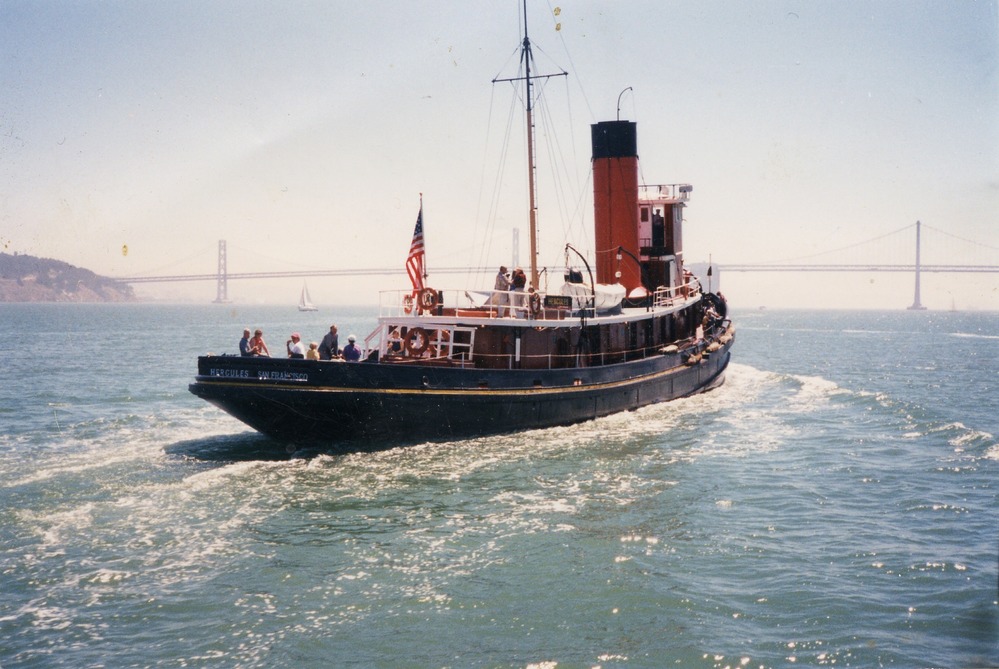Last updated: July 11, 2025
Lesson Plan
Full STEAM Ahead - What is Hercules?

1907 steam-powered ocean-going tugboat Hercules steams on the San Francisco Bay.
Photo/NPS
- Grade Level:
- Upper Elementary: Third Grade through Fifth Grade
- Subject:
- Literacy and Language Arts,Social Studies
- Lesson Duration:
- 60 Minutes
- Common Core Standards:
- 4.SL.1, 4.SL.2
- Thinking Skills:
- Understanding: Understand the main idea of material heard, viewed, or read. Interpret or summarize the ideas in own words. Analyzing: Break down a concept or idea into parts and show the relationships among the parts. Evaluating: Make informed judgements about the value of ideas or materials. Use standards and criteria to support opinions and views.
Essential Question
What is maritime history and why is it important to us today?
How did changes in technology affect communities in San Francisco and California in the early 1900s?
Objective
Students will analyze primary sources to explain HERCULES' role as a tugboat.
Preparation
1. Print photos for gallery walk and place around the classroom.
2. Provide students with post-it notes.
3. Print worksheets.
Materials
Slides to guide the investigation of Hercules through primary and secondary sources.
Download What is Hercules - Classroom Slides
Photos and articles to print out for gallery walk activity and reference throughout the lesson.
Download What is Hercules - Primary Sources
Lesson Hook/Preview
Introduce the idea that students will be historians by looking at artifacts from the past.
What can objects from the past tell us about history?
Procedure
1. Introduce the idea that students will be historians by looking at artifacts from the past--primary sources--to learn about an object called the Hercules. As they explore these primary sources, they will be taking close observations and making inferences as to what the Hercules is, and when it was in use.
2. Example/We Do: Provide a narrative/picture of the time period & practice
3. Gallery walk--provide post-it notes for students to write observations & stick to primary sources; allow students to review/re-read each other’s writing
4. Independent Jot: What did you observe? What questions do you have?
5. Classroom share. What did you observe? What questions do you have?
**Add: What’s in a name?
Assessment Materials
Individual ReflectionThis activity is meant to assess the student's understanding of the lesson through individual observation and reflection.
Individual Reflection Page
Supports for Struggling Learners
- Review vocabulary beforehand (included in slides).
- Strategically partner students so that they are provided with additional supports.
- Sentence frames (included in slides.)
Related Lessons or Education Materials
This is Lesson One of the Hercules STEAM Unit.
The Hercules STEAM Unite provides students with an understanding of life in the early 1900s. Students will begin by becoming historians and observing primary sources of information to answer the question: What is Hercules? Then, they will get to deeply understand how the engine on Hercules works. They will be able to observe a series of experiments and simulation to comprehend how steam engines function at a molecular level and identify the energy transfers. Finally, students will have the opportunity to become engineers themselves. They will build a towboat and present their learnings to a National Park Ranger!
Estimated Length of Unit: 14 Lessons/3 weeks
